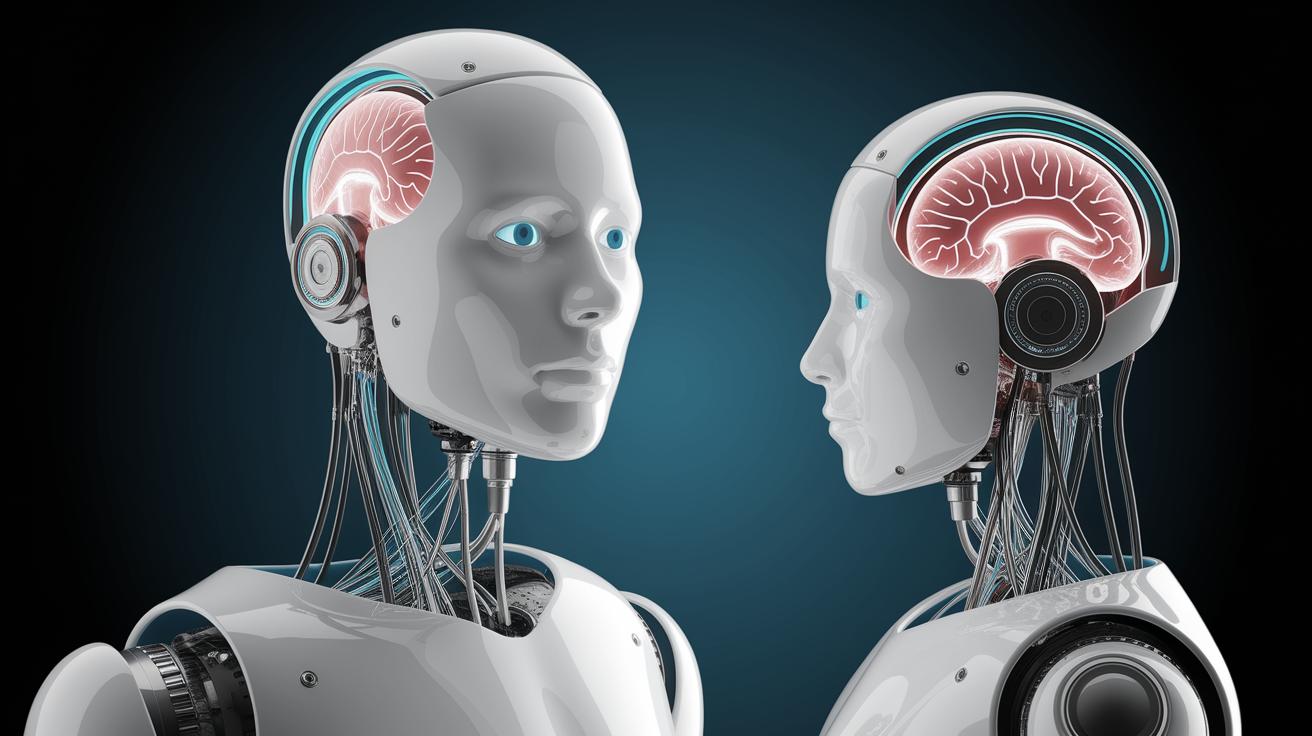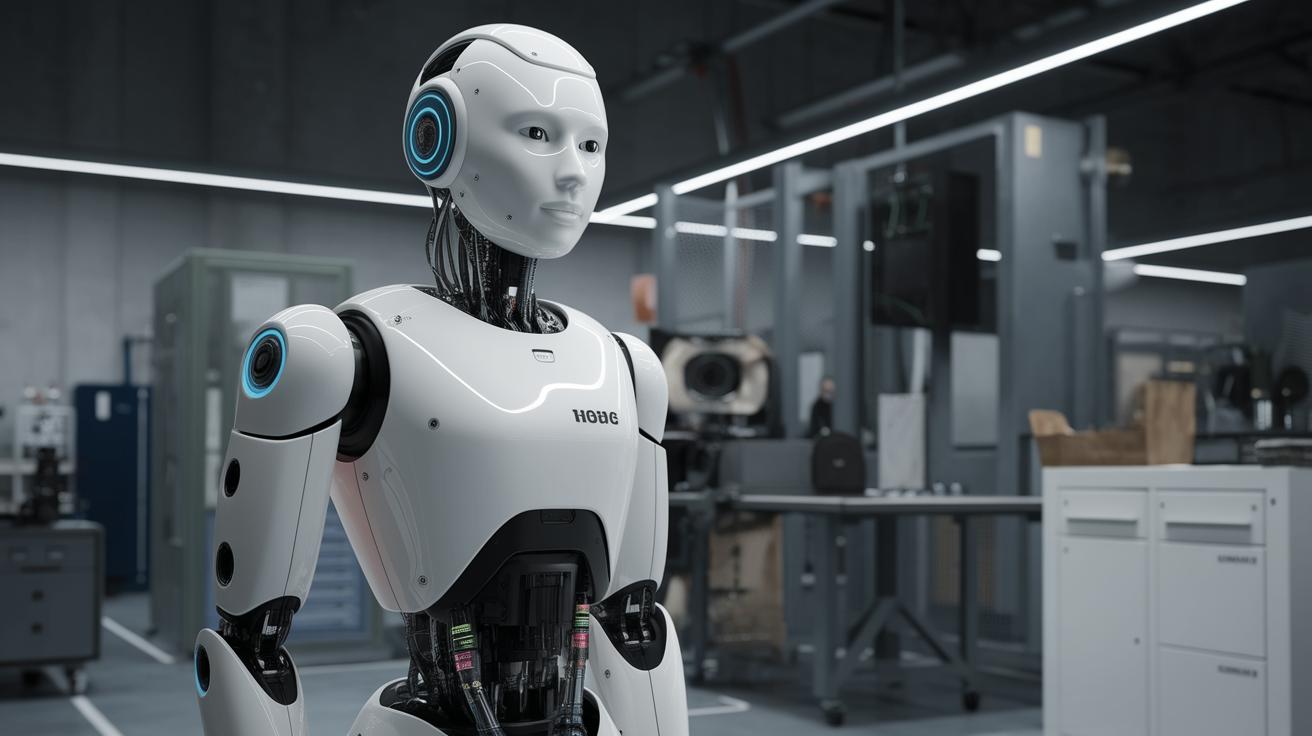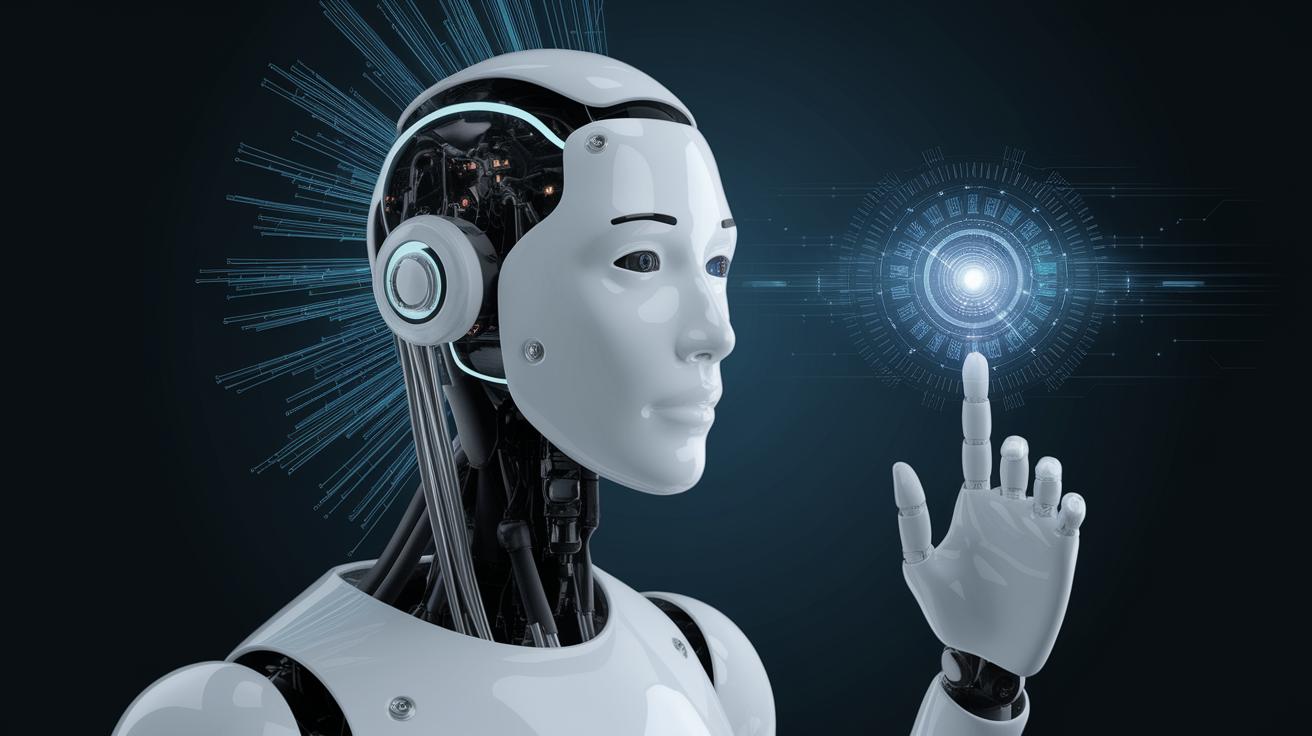Abstract
Neuro-robotics is a pioneering field at the intersection of robotics, neuroscience, and artificial intelligence. It aims to create systems that integrate neural processes with robotic capabilities. This blog post explores the ethical landscape and potential applications of neuro-robotics, examining its societal impact and how it is paving the way for future innovations. The discussion covers ethical concerns, responsible innovation, academic-industry partnerships, and the importance of data governance in neuro-robotics research.
Introduction
In recent years, the convergence of technology and neuroscience has yielded exciting advancements in neuro-robotics. This innovative field has the potential to revolutionize how we understand and interact with robotic systems by integrating neural processes. This comprehensive blog post delves into the intricate relationship between traditional robotics and neuro-robotics, highlighting their distinct ethical considerations and potential societal impacts. Furthermore, it explores various applications and discusses the challenges of data governance and responsible innovation that accompany this rapidly evolving domain.
Ethics and Traditional Robotics Versus Neurorobotics
Traditional robotics has primarily focused on developing machines that can autonomously perform tasks to improve efficiency and reduce human labor. However, as these machines become more advanced, ethical concerns about their integration into daily life have arisen. These concerns center around issues such as the displacement of human labor, safety, and accountability for robotic actions.
In contrast, neurorobotics introduces a new layer of ethical considerations since it involves integrating human-like cognitive processes into machines. Unlike traditional robotics, neurorobotics faces questions about the boundaries between biology and technology, and the ethical implications of simulating human thoughts and behaviors in machines. This section delves into these distinct ethical landscapes, comparing and contrasting the concerns of traditional robotics with those specific to neurorobotics.
Neurorobotics
Neurorobotics stands at the cutting edge of technological innovation, combining neurons and circuits to create robots that learn and adapt through neural signaling. This approach leverages the brain’s architecture to develop robots that can perform complex tasks and make autonomous, intelligent decisions. By incorporating neural networks and artificial intelligence, neurorobotics aims to bridge the gap between biological neural frameworks and machine functionality.
Emerging technologies in neurorobotics promise to revolutionize fields such as healthcare, where robotic systems could assist in rehabilitation therapies, support cognitive conditions, and aid surgeons with precision tasks. This section explores the technology behind neurorobotics and its potential to break new ground in both understanding the human brain and creating responsive, intelligent robotic systems.
Possible Applications of Neurorobotics: Potential Opportunities and Ethical Questions
The potential applications of neurorobotics span numerous fields, offering exciting opportunities for advancements and novel solutions to existing challenges. In medicine, neurorobotics could facilitate the development of advanced prosthetics that integrate seamlessly with neural networks to mimic natural movement sensations. Similarly, in the field of education, neuro-robotic systems may be utilized to create personalized learning experiences that adapt to students’ cognitive preferences and learning speeds.
However, these potential benefits come with ethical considerations. The possibility of enhanced human-machine integrations raises questions regarding privacy, consent, and the societal impact of creating systems that closely mimic or replicate human intelligence. This section highlights both the promising opportunities and ethical debates emerging from neurorobotics applications.
Social and Ethical Concerns of Neurorobotics
Despite its potential, neurorobotics brings with it significant social and ethical concerns. Key among these are issues of privacy and data security. As neurorobotics involves extensive data collection and analysis, the private and sensitive information associated with neural interactions must be protected. Furthermore, ethical considerations about the disparities in access and the potential misuse of neurorobotic technologies must be addressed.
There’s also the question of defining personhood and agency as machines become more human-like in behavior and cognition. This translates into complex ethical dilemmas about accountability and ownership of actions and decisions made by neurorobotic systems. This section addresses these concerns and examines how ethical guidelines and responsible research can help navigate these challenges.
Responsible Research and Innovation in the HBP
The Human Brain Project (HBP) is a significant initiative aimed at decoding the human brain through interdisciplinary research, including neurorobotics. Responsible research and innovation within the HBP highlight the need for balancing technological advancement with ethical considerations. This includes developing frameworks that ensure fairness and transparency in neurorobotics research.
The HBP’s approach encourages open dialogue among stakeholders, researchers, policymakers, and the public. This collaborative effort is vital as it seeks to develop guidelines that govern ethical experimentation and the deployment of neurorobotic technologies. This section emphasizes how responsible innovation is essential for the sustainable integration of neurorobotics into society.
Dual Use
The concept of dual-use in neurorobotics refers to the potential for technologies developed for beneficial purposes to be repurposed for harmful intents. As with advances in AI and robotics, there is a risk that neurorobotic systems could be adapted for surveillance, military, or exploitive applications.
To mitigate these risks, researchers and developers must enforce strict ethical guidelines and engage with policymakers to regulate the applications and distribution of neurorobotics technology. This section discusses the measures required to prevent the misuse of neurorobotics and highlights the importance of maintaining ethical practices throughout research and development processes.
Academic Research–Industry Partnerships
Partnerships between academic institutions and industries play a pivotal role in advancing neurorobotics research. These collaborations accelerate the transition of theoretical research into practical applications, enabling efficient development and dissemination of new technologies.
However, such partnerships also pose challenges in aligning academic pursuits with commercial interests, potentially leading to conflicts of interest and ethical dilemmas. This section analyses the benefits and challenges of academic-industry partnerships and proposes strategies for fostering transparency and ethical compliance within these collaborations.
Data Governance
Robust data governance frameworks are crucial to addressing the data privacy concerns associated with neurorobotics. Implementing guidelines for data protection helps prevent unauthorized access and misuse of sensitive neural data collected during neurorobotics research and applications.
Data governance also ensures that stakeholders properly manage the sharing and use of data, thereby fostering trust and security. This section emphasizes the importance of developing comprehensive data governance practices to safeguard individuals’ privacy and enhance the ethical deployment of neurorobotic technologies.
Conclusion
Future Prospects
As neurorobotics continues to advance, its potential to transform fields such as healthcare, education, and human-machine interactions remains significant. However, to realize the full benefits of neurorobotics, a balanced approach to innovation and ethics is necessary.
Ongoing collaboration between researchers, policymakers, and industry leaders is essential to develop comprehensive frameworks that address ethical concerns, ensure responsible innovation, and mitigate risks. Through concerted efforts, neurorobotics can successfully bridge technology and neuroscience, leading to a future where machines enhance human capabilities while respecting ethical boundaries.
| Section | Summary |
|---|---|
| Ethics and Traditional Robotics Versus Neurorobotics | Examines the distinct ethical considerations and landscapes between traditional robotics and neurorobotics, highlighting key concerns. |
| Neurorobotics | Explores the technological innovations and potential benefits of neurorobotics, delving into its role in bridging neuroscience and robotics. |
| Applications and Ethical Questions | Discusses the potential applications of neurorobotics and the accompanying ethical considerations associated with these innovations. |
| Social and Ethical Concerns | Addresses the social and ethical issues surrounding neurorobotics, including privacy, data security, and defining agency. |
| Responsible Research and Innovation | Highlights the importance of ethical frameworks and responsible practices within neurorobotics research. |
References
References will be made available upon request or through related academic publications on neurorobotics.
Funding
The research and development of neurorobotics is supported by various academic institutions and industry partnerships, with funding sourced through governmental grants and private investment.
Author information
Authors and Affiliations
Lucas Martin, Freelance Journalist and Communications Specialist
Corresponding author
Lucas Martin – Reachable via professional email for further inquiry into neurorobotics.
Additional information
Publisher’s Note
All views expressed in this blog are those of the author and do not necessarily reflect the official policy or position of any affiliated organization.
Rights and permissions
This article is published under a Creative Commons Attribution 4.0 International License, which permits usage, sharing, adaptation, distribution, and reproduction in any medium, provided appropriate credit to the original author.
About this article
Cite this article
Martin, L. (2023). How Neuro-Robotics is Bridging Technology and Neuroscience. Retrieved from [URL]
Share this article
This article can be shared through social media platforms, professional networks, and academic forums using the provided citation format.
Keywords
Neurorobotics, Robotics, Neuroscience, Artificial Intelligence, Ethics, Innovation, Data Governance
Associated Content
huyong yan
Additional readings and related content available through associate authors and expert publications in neurorobotics.
Similar content being viewed by others.
Related articles and blog posts discussing the latest advancements and ethical considerations in neurorobotics and related fields.


